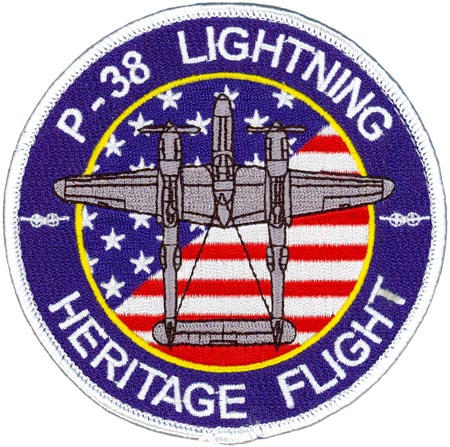Description
Computer made/mounted on velcro 4.0 inch-100mm
AIR FORCE HERITAGE FLIGHT PROGRAM
The U.S. Air Force Heritage Flight (HF) program presents the evolution of USAF air power by flying today’s state-of-the-art fighter aircraft in close formation with vintage fighter aircraft.
An HF performance involves a current USAF fighter piloted by an Air Combat Command trained military HF pilot and flown with a historical warbird piloted by a trained and certified civilian HF pilot. The HF formations of modern fighters flying with World War II, Korean, and Vietnam era fighters such as the P-51 Mustang and F-86 Sabre, dramatically display our U.S. Air Force air power history and proudly support our Air Force’s recruiting and retention efforts. In 2010, the Air Force Heritage Flight Foundation (AFHFF) was formed to keep this popular program flying.
LOCKHEED P-38 LIGHTNING
The P-38 was originally conceived as an advanced, high-performance twin-engine interceptor. On Feb. 11, 1939, Lt. Ben Kelsey set a coast to coast record of 7 hours, 48 minutes in the sleek prototype Lightning, but crashed while landing. Despite the accident, development continued and the first of 13 service test YP-38s flew on Sept. 16, 1940. Early model P-38s experienced turbulent airflow over the tail and problems at high dive speeds, known as compressibility, but later modifications corrected these difficulties.
The first major production version was the P-38E, which had a 20mm cannon rather than the earlier 37mm cannon. Production of the E began in September 1941 and 210 were built. The next version, the P-38F, introduced pylon racks that could carry either bombs or droppable fuel tanks, greatly extending its range. Production of the G began in August 1942, followed by the P-38H in May 1943, which had a more powerful version of the Allison V-1710 engine.
The P-38J, introduced in August 1943, was considerably improved over earlier models. It had better cockpit heating (a notable problem on earlier models), more efficient cooling for its engines, a flat bulletproof windscreen, additional fuel in the wings, and increased maneuverability.
P-38 Lightning in Service
The versatile Lightning performed many different missions during World War II, including dive bombing, level bombing, bombing through clouds, strafing, photo reconnaissance and long range escort. It first went into large-scale service during the North African campaign in November 1942, where the German pilots named it Der Gabelschwanz Teufel (“The Forked-Tail Devil”). When the Lightning began combat operations from England in September 1943, it was the only fighter with the range to escort bombers into Germany.
The Lightning truly shined in the Pacific theater; seven of the top eight scoring USAAF aces in the Pacific flew the P-38. On April 18, 1943, the long range of the P-38 enabled USAAF pilots to ambush and shoot down an aircraft carrying Admiral Isoroku Yamamoto, who was the planner of the Pearl Harbor raid and the commander of the Imperial Japanese Navy. The P-38 became the standard USAAF fighter in the Pacific theater until the closing months of WWII.
TECHNICAL NOTES:
Armament: Four .50-cal. machine guns and one 20mm cannon
Engines: Two Allison V-1710s of 1,475 hp each
Maximum speed: 414 mph
Cruising speed: 275 mph
Range: 1,300 miles
Ceiling: 40,000 ft.
Span: 52 ft.
Length: 37 ft. 10 in.
Height: 12 ft. 10 in.
Weight: 17,500 lbs. loaded
